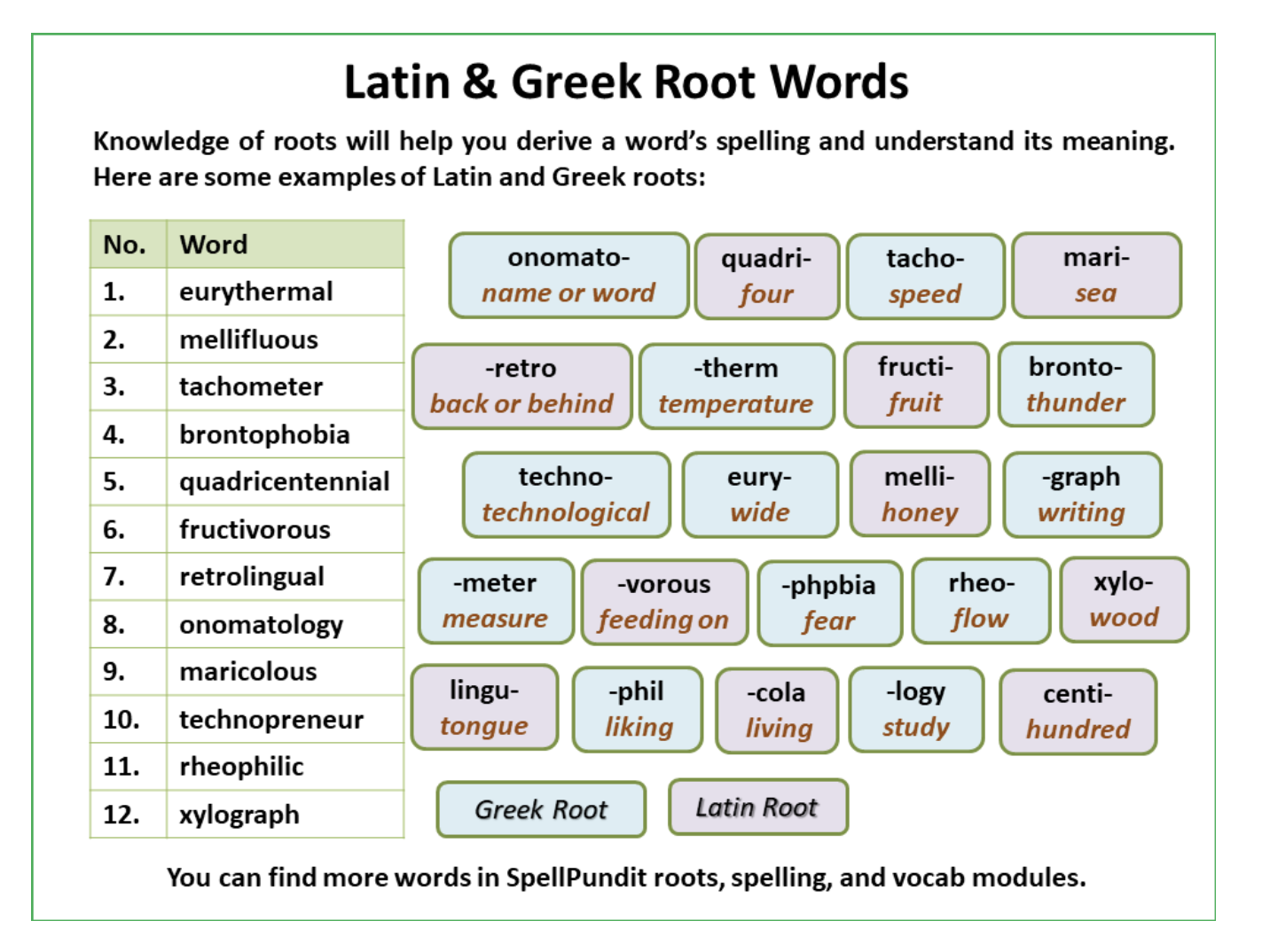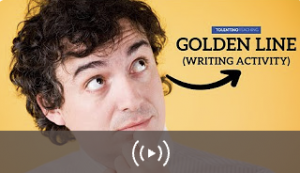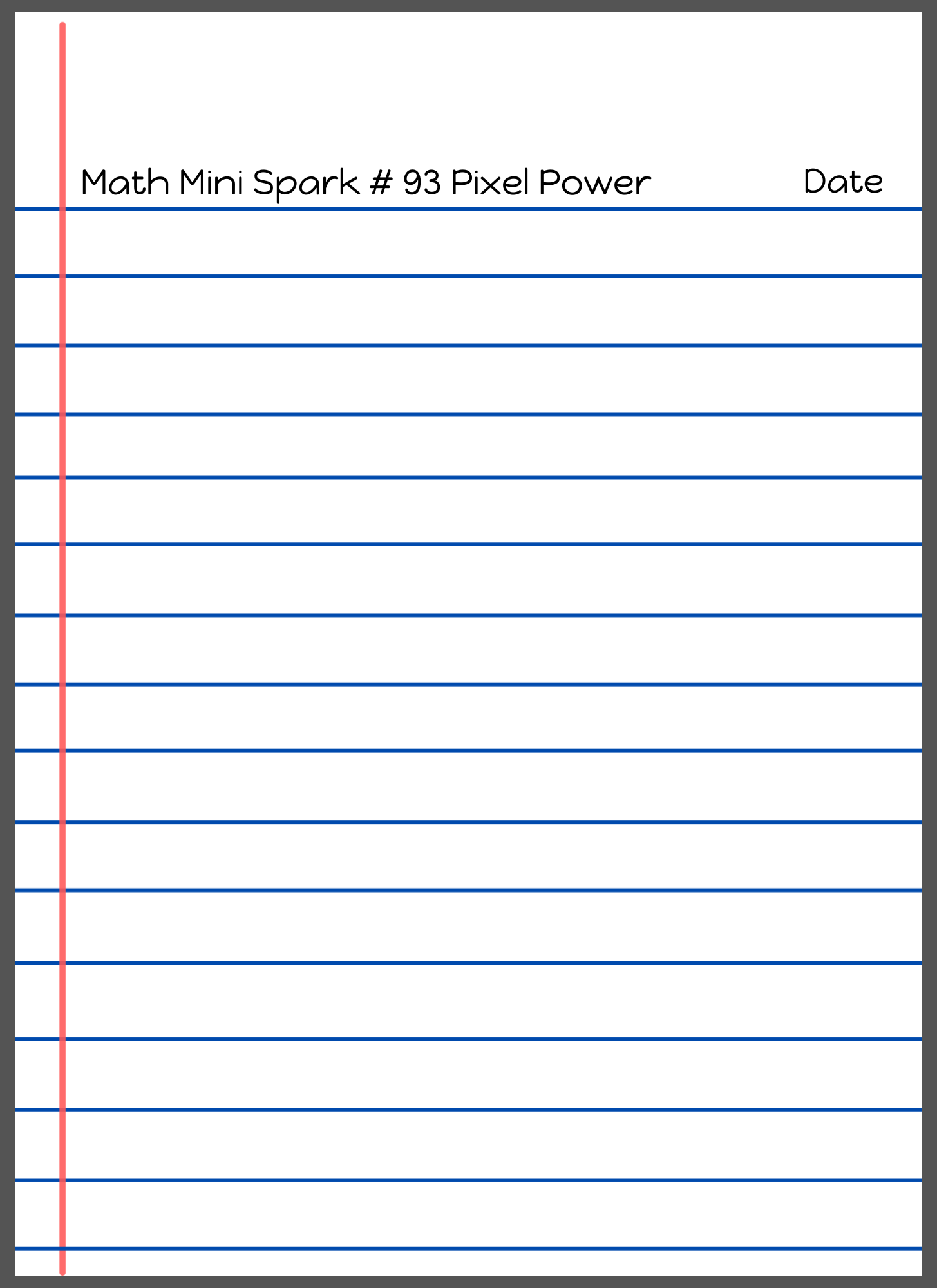 Learning Greek and Latin roots can help your understand English better, improve your vocabulary, and learn how to read and spell new words.
Learning Greek and Latin roots can help your understand English better, improve your vocabulary, and learn how to read and spell new words.
Spark your thinking!
1. Set up your language arts mini spark recording page: #73: Greek and Latin Roots
2. Watch this video. As you are watching pause the video as needed to write down at least 10 root words and at least 5 affixes and their meanings on your recording page.
3. Study this image. On your recording page, write 5 of the the roots and meanings that will be the hardest for you to remember.
 4. Make flash cards for each of the pink and blue buttons. On one side put the root and the other side put the meaning. Study the cards. 5 times.
4. Make flash cards for each of the pink and blue buttons. On one side put the root and the other side put the meaning. Study the cards. 5 times.
5. Look at the word list and find the matching set of cards for each. Lay them out on your desk. Take a picture and add it to your recording page.
6. Learn how to pronounce the 12 words. You can do this by typing in the word into your search bar and then typing “pronounce”. Practice each word several times.
7. Memorize the spellings of these 12 words. When you are ready, have a friend quiz you on the spellings. Record your quiz score on your recording sheet.
8. Share your language arts mini spark recording page and your note cards with your teacher/EY coordinator.
Lesson idea adapted from Khan and SpellPundit
 Constitution Day, which is celebrated every year on September 17th, commemorates the formation and signing of the U.S. Constitution on September 17, 1787.
Constitution Day, which is celebrated every year on September 17th, commemorates the formation and signing of the U.S. Constitution on September 17, 1787. 



 Make a tiny a football game with goal posts that you can play with your friends. Materials needed for your game: One piece of paper!
Make a tiny a football game with goal posts that you can play with your friends. Materials needed for your game: One piece of paper!



 Explore the engineering innovations that made the construction of Burj Khalifa, the world’s tallest skyscraper, possible. Notably, it stands at a height of 828 meters (2,717 feet) and features a unique Y-shaped design that enhances stability and reduces wind forces.
Explore the engineering innovations that made the construction of Burj Khalifa, the world’s tallest skyscraper, possible. Notably, it stands at a height of 828 meters (2,717 feet) and features a unique Y-shaped design that enhances stability and reduces wind forces.